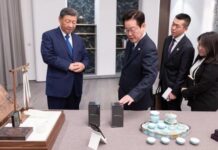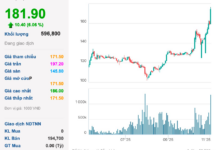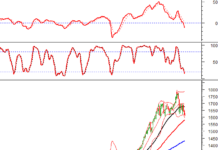Two-part Electricity Pricing System Proposed in Vietnam

Powerline workers in Dien Bien province check the meter index. (Source: TTXVN)
|
The Electricity Regulatory Authority (under the Ministry of Industry and Trade) has recently announced the Vietnam Electricity Group’s (EVN) proposal to pilot a two-part electricity pricing system, consisting of capacity and electricity consumption charges, this year.
According to the Electricity Regulatory Authority, the two-part electricity pricing system is currently in the research and pilot stage on paper for industrial and commercial customers and will not be implemented for residential customers.
After the pilot, the Ministry of Industry and Trade will continue studying and submitting the findings to the Prime Minister for consideration and final implementation.
The pilot implementation of the two-part electricity pricing mechanism is initially for calculation and research purposes and will not affect the electricity bills of current customers, who will continue to pay according to the current electricity tariff. The Ministry of Industry and Trade stated that the pilot aims to evaluate and calculate the price differences between the current electricity tariff and the two-part electricity tariff to aid regulatory authorities in designing a two-part electricity pricing mechanism that aligns with practical needs.
Currently, the electricity sector’s infrastructure, including information technology and metering systems, is ready for the implementation of the two-part tariff.
Moreover, power corporations have installed electronic meters that can measure capacity and electricity consumption for most industrial and commercial customers. These customers are eligible for time-of-use (TOU) electricity pricing.
The Electricity Regulatory Authority believes that this pricing system will alter fundamental electricity usage patterns, directly impacting customer behavior, electricity bills, and the overall electricity grid. Therefore, paper simulations and customer awareness campaigns will be conducted to facilitate understanding of the new mechanism. A real-world pilot will follow to evaluate pros and cons and draw lessons before implementing the new mechanism on a larger scale.
Regional and global countries have implemented two-part electricity pricing. Based on their experiences, this pricing model provides accurate signals to both electricity producers and consumers, leading to more efficient resource allocation and utilization compared to the current single-part electricity pricing system.

Checking the meter index. (Source: TTXVN)
|
To compare with the current tariff, the Electricity Regulatory Authority has calculated the average electricity price per kWh based on research and international best practices. The results show that the average electricity price consumers pay will decrease as the peak capacity consumption time (Tmax) increases, and vice versa.
According to the Electricity Regulatory Authority, “this will encourage customers to pay attention to their electricity usage patterns to minimize their electricity bills.”
Furthermore, for customers with high electricity consumption, increasing Tmax will lower their average electricity price. This will also improve the efficiency of the electricity sector’s fixed assets, allowing the industry to reduce investment costs and recover fixed costs.
Therefore, implementing a two-part electricity pricing system will benefit both the electricity sector (electricity suppliers) and consumers (electricity customers).
Experts believe that the two-part electricity pricing mechanism, which considers capacity and consumption, will create a more transparent, fair, and efficient playing field for all stakeholders, including power plants, electricity sources, and electricity users (businesses and individuals), paving the way for a future electricity market.
 Checking the meter index. (Source: TTXVN)
|
The two-part pricing mechanism includes a capacity charge and an electricity consumption charge. The electricity bill will display two pricing components: capacity charge, which customers register for as a “capacity package” based on their usage needs, and electricity consumption charge, which is based on the actual amount of electricity used. The two-part electricity pricing mechanism is similar to the telecommunications packages currently offered by network operators.
Meanwhile, the current electricity pricing mechanism only considers electricity consumption (VND/kWh). This mechanism does not reflect the actual costs incurred by electricity users on the power grid.





































